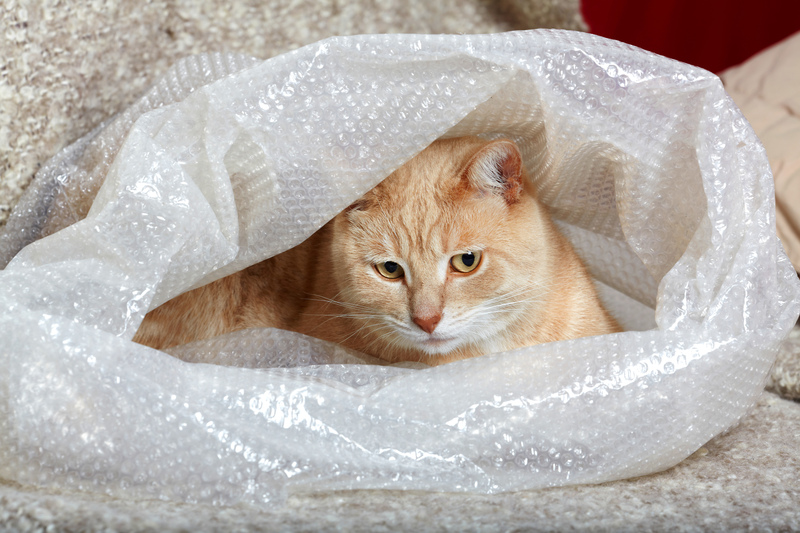Getting Your Freezer Ready for Storage the Right Way
When it's time to store your freezer--whether you're moving, remodeling, or simply won't need it for a while--it's crucial to prepare it properly. Getting your freezer ready for storage the right way not only preserves its longevity but also prevents issues like mold, odors, or mechanical failures. In this comprehensive guide, we'll walk you through every step, ensuring you can safely stow your appliance with confidence.
Why Preparing Your Freezer for Storage Matters
Properly preparing your freezer for storage offers several benefits:
- Prevents bad odors and mold growth
- Reduces the risk of damage during transport or while stored
- Protects the appliance's working components
- Ensures it's ready to use once it's taken out of storage
By packing up your freezer correctly, you'll save time, money, and hassle in the long run.

Step-by-Step Guide: Preparing Your Freezer for Storage
1. Remove All Contents
Start by emptying your freezer. Consume, donate, or dispose of frozen goods. Never store your freezer with food or ice left inside, as this will lead to spoilage, mold, and unwanted odors down the line.
- Check expiration dates.
- Transfer any items you wish to keep into another freezer or cool bags with ice packs.
- Dispose of perishables responsibly.
2. Defrost Thoroughly
Defrosting is one of the most important steps when getting your freezer ready for storage. Leaving ice inside can lead to leaks, water damage, or mold growth.
- Unplug the freezer and leave the door open.
- Place towels around the base to absorb any melting ice.
- Allow enough time for all the ice to melt completely--this may take several hours, depending on ice build-up.
- Remove all water with towels or a sponge, ensuring the interior is completely dry.
Tip: Speed up defrosting with bowls of hot water placed inside, but never use sharp tools to chip away ice, as you may damage the lining.
3. Deep Clean and Deodorize
Cleanliness is key before long-term storage. Walls, drawers, and shelves may harbor food particles or bacteria that cause smells or mildew.
- Use a solution of warm water and mild dish soap to wash all internal surfaces.
- Rinse with clean water and dry with a soft cloth.
- For odors, wipe down with a mixture of baking soda and water (about 2 tablespoons per quart of water).
- Clean the outside as well, especially the gasket (rubber door seal), to remove crumbs or sticky residue.
- Let the door stay open to air dry completely.
4. Protect the Interior and Exterior
Take steps to shield both the inside and outside of your freezer:
- Remove and clean all drawers, trays, or shelves. Store these inside the freezer if possible, otherwise bubble-wrap and label them for easy reassembly.
- Place an open box of baking soda or a few charcoal briquettes inside to absorb future odors.
- Wrap the exterior with a soft blanket or appliance cover to prevent scratches if you're moving it.
5. Secure and Prepare for Transport
Before moving your prepared freezer into storage:
- Tape the door shut or use rope to secure it gently--this prevents accidental opening during transport but should not clamp the door so tightly it damages the seal.
- If moving, try to keep the freezer upright at all times to avoid damaging internal refrigerant lines.
- Protect power cords by taping them securely to the back of the appliance.
6. Store with the Door Ajar
This is a critical step to prevent musty smells or mildew:
- Always leave the door slightly open, about an inch or two. Many people use a towel, small ball, or even a block of foam to keep the door from sealing completely.
- This allows air circulation and drastically reduces the risk of mold growth.
- If you're concerned about pests, cover the front with breathable fabric like an old sheet--never wrap the entire appliance in plastic, as this traps moisture.
Where and How to Store Your Freezer
Storing a freezer safely involves more than just prepping the appliance itself. Location matters! Here's what to consider for freezer storage done the right way:
Choose an Appropriate Storage Space
- Indoor over outdoor: If possible, store in a garage, basement, or indoor unit. This better protects against extreme temperatures and weather damage.
- Climate-controlled storage: Ideal for preventing rust, condensation, and temperature fluctuations.
- Avoid damp locations: Moisture can cause rust and electrical problems.
- Elevate your freezer slightly with blocks or a wooden pallet, especially in spaces that might experience water leaks or floor dampness.
Placing and Positioning the Freezer
- Keep upright: Laying your freezer on its side or back can displace refrigerant and damage components. Always transport and store upright.
- Leave enough space around the appliance for airflow (at least a few inches on each side).
- Don't stack heavy objects on top, which can warp the appliance or crack the lid.
Protecting Electrical Components
Ensure the power cord doesn't get bent, crushed, or pinched. You may want to wrap it in a soft towel or bubble wrap and tape it to the back, ensuring it's not hanging loose or touching the floor.
Never plug in a stored freezer until you're ready to use it again--let it come to room temperature first if it's been in a cold area, helping to avoid damage from condensation.
Tips for Long-Term Freezer Storage
For those considering long-term storage for your freezer, the following tips can make a difference:
- Check periodically: If possible, look in on your appliance every couple of months to ensure there are no signs of moisture, pests, or unexpected odors.
- Avoid plastic wrapping: Never encase your freezer in plastic, which can trap moisture and promote mold.
- Label your appliance: If storing with other items, mark it as "CLEAN & DRY--READY FOR USE" and note the date it was prepped for storage.
What to Do Before Re-Using Your Stored Freezer
Ready to put your appliance back into service? Here's how to safely bring a stored freezer back into use:
- Inspect the inside and outside for signs of mold, pests, cobwebs, or dust.
- Give it a quick surface clean, especially if it's been stored for many months.
- Let the freezer acclimate to room temperature for at least 4-6 hours, particularly if it's come from a cold space.
- Plug it in and let it run empty for several hours to verify there's no unusual noise or malfunction.
- Once it's reached full operating temperature, you can safely reload your frozen goods!
Common Mistakes When Prepping Your Freezer for Storage
Even with the best intentions, some common errors can compromise your appliance:
- Storing with the door sealed shut--causes odor and mold problems.
- Forgetting to defrost completely--water left behind can cause rust or damage floors.
- Failing to clean thoroughly--even crumbs lead to unpleasant smells later.
- Putting it in an outdoor or unprotected location--risk of rust, electrical issues, and weather damage.
- Laying the freezer on its side--potentially irreparably damages the compressor.

Frequently Asked Questions About Freezer Storage
Can I store my freezer unplugged for months at a time?
Yes! With the right preparation--clean, dry, defrosted, and with the door left slightly open--your freezer can be stored unplugged safely for months or even years.
Is it OK to wrap my freezer in shrink wrap or plastic for storage?
No. Plastic wrap traps moisture, leading to mold or rust. Use breathable coverings like cloth sheets or appliance covers that allow air to circulate.
How do I prevent bad smells when storing my freezer?
Clean thoroughly, allow the interior to dry out completely, leave the door ajar, and add baking soda or activated charcoal inside to absorb any lingering odors.
Can I store my freezer in an outdoor shed?
While technically possible, this is not usually recommended. Risk factors include temperature extremes, moisture, and pests. If it's your only option, be especially careful about location, moisture protection, and checking the appliance periodically.
Conclusion: Store Your Freezer the Right Way for Long-Term Reliability
Getting your freezer ready for storage the right way is a wise investment in your appliance's future. By following the steps above--emptying, defrosting, cleaning, drying, and ensuring the door remains ajar--you'll keep your freezer in excellent condition, free of odors and ready for reuse whenever you need it.
Whether you're storing your freezer temporarily or for several months, a little preparation goes a long way. Take the time now, and you'll save yourself from headaches (and expensive repairs) later. If you follow this guide whenever you need to stow your appliance, your freezer will be ready to reliably chill your goods for years to come!
Is it time to get your freezer ready for storage? Use this page as your checklist for success--and ensure your appliance stays in top shape, no matter where you keep it.